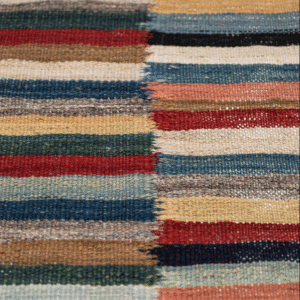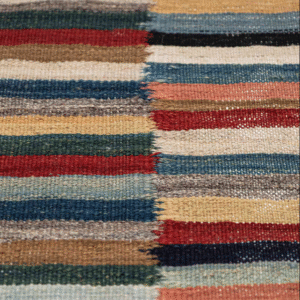A donate button is one of the simplest ways to collect money online. It is a small clickable element on a website or email that lets people give money directly. With just a click, visitors can go from thinking about giving to completing a donation.
You see donate buttons on nonprofit websites, personal fundraising pages, and even social media profiles. They work because they make the act of giving fast and easy. People do not need to search for a form or mail a check. They can give while the thought is fresh.
What a Donate Button Does
The main job of a donate button is to take the user to a payment page. This page is where the person can enter the amount, fill in their details, and confirm the donation. In some cases, the button is linked to a secure payment system that collects the money instantly.
A donate button can be a plain text link or a graphic. Many are designed in bright colors so they stand out. The text is short and direct, often just saying “Donate” or “Give Now.” The goal is to make it obvious and quick to use.
Why Placement Matters
Where the donate button sits on a page affects how many people use it. Most sites put it in the top corner of the main menu so it is visible on every page. Others place it within articles or at the end of a story about the cause.
If it is hidden at the bottom or buried in a menu, fewer people will find it. The easier it is to spot, the more likely people will click. A clear and visible button works better than a small, hard-to-find link.
How Design Affects Donations
Design plays a role in how people respond to a donate button. A button that blends into the background may get ignored. One that uses a color that contrasts with the page draws attention.
Simple design works best. Too much decoration can make it look like an ad. Plain, bold text on a solid background is enough. Adding a short phrase like “Help Today” or “Support Our Work” under the button can also help.
Mobile-Friendly Buttons
Many people now browse and donate on their phones. If the donate button is too small or the payment page is hard to use on mobile, potential donations are lost.
A mobile-friendly donate button is large enough to tap easily with a finger. It leads to a payment form that loads fast and works well on a small screen. The fewer steps it takes to complete the donation, the better.
Linking to Trusted Payment Systems
Trust is critical when asking for money online. The donate button should link to a secure payment system. Well-known platforms like PayPal, Stripe, or dedicated fundraising tools give donors confidence.
When a donor clicks the button, they should see a secure connection symbol in their browser. They should also see the organization’s name on the payment page to confirm they are giving to the right place.
Adding Donate Buttons to Social Media
Many social media platforms allow users to add a donate button to their page. This works well for charities and individuals who want to raise money for a cause.
On platforms like Facebook or Instagram, the button can appear on a profile or within a post. It makes it easy for followers to give without leaving the app. This is useful for time-sensitive campaigns or emergencies where speed matters.
Tracking Performance
A donate button is more effective when you know how well it works. Tracking tools can show how many people click it, how many complete the payment, and how much is raised.
If clicks are high but donations are low, the issue might be with the payment page. If clicks are low, the problem could be the placement or design of the button. Adjusting these details can lead to better results.
Testing Different Versions
Small changes can make a big difference. Testing different colors, sizes, or wording on a donate button can show which version gets more clicks.
This is often done with A/B testing, where two versions are shown to different visitors. Over time, you can see which one performs better and keep improving from there.
Using Multiple Buttons
Some websites use more than one donate button on a single page. For example, one might be in the menu, one in the main content, and one at the end of a story. Each placement catches people at different moments.
Someone might ignore the button at the top but decide to click after reading a moving story. Another person might use the button in the sidebar while scanning the page.
Connecting Donate Buttons to Campaigns
A donate button can be linked to a specific campaign or project. Instead of going to a general donation page, it can take people to a page with details about the exact cause they are supporting.
This approach works well when you have multiple projects running. It helps people feel their money is going to something clear and specific.
Email Donate Buttons
Email is still a strong way to raise funds. Adding a donate button to an email makes it simple for readers to give right away.
The button should be placed where it is easy to find, often near the top and again at the bottom. This gives readers more than one chance to click without having to scroll back.
Making It Accessible
Accessibility means making sure everyone can use the donate button, including people with disabilities. This includes adding text descriptions for screen readers, making sure the button works with keyboard navigation, and using colors with enough contrast.
When the button is accessible, more people can give without barriers.
Encouraging Recurring Donations
Some donate buttons give the option to make the donation repeat every month. This can help organizations get steady funding.
If offering this, make it clear and easy to select. Some donors prefer a one-time gift while others like the convenience of recurring support.
Avoiding Common Mistakes
A donate button can fail if it is too hidden, too small, or broken. Linking it to a slow or confusing payment page can also turn donors away.
Avoid asking for too much information before taking the payment. The longer the form, the more people will leave without completing it.
Final Thoughts
A donate button may be small, but it can have a big impact on fundraising. Good placement, clear design, and a smooth payment process can help turn interest into real support.
The easier you make it for people to give, the more likely they are to help your cause.





